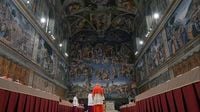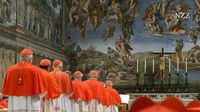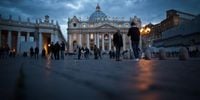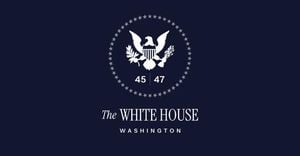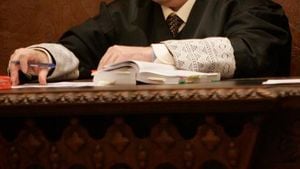In the wake of Pope Francis's funeral, the cardinals of the Catholic Church are gearing up for a pivotal conclave set to begin in May 2025. This conclave promises to be one of the most significant in recent decades, with 135 eligible cardinals from over 70 countries participating. The cardinals face the daunting task of selecting a successor to a pontiff who, despite his imperfections, left an indelible mark on the Church.
Pope Francis, who passed away on Easter Monday at the age of 88, was laid to rest in a simple grave at the Basilica of Santa Maria Maggiore, where a single white rose now rests beside his marble headstone. The atmosphere at his final resting place starkly contrasts with the grandeur of his funeral held on April 26, 2025, attended by hundreds of state guests and an estimated 400,000 mourners in St. Peter's Square. During this emotional farewell, tributes poured in from world leaders, including U.S. President Donald Trump, French President Emmanuel Macron, and UN Secretary-General António Guterres, all of whom acknowledged Francis's commitment to mercy and social justice.
As preparations for the conclave intensify, discussions among the cardinals are focused on the qualities they seek in the next pope. Cardinal Reinhard Marx, the Archbishop of Munich and Freising, anticipates that the conclave will last only a few days, similar to past papal elections. Speculation is rife regarding potential candidates, with Pietro Parolin, the current Cardinal Secretary of State and a close confidant of Francis, emerging as a frontrunner.
The conclave is set to convene between May 5 and May 10, 2025, as the cardinals are required to meet within 15 to 20 days following the pope’s death. The cardinals will gather in the Sistine Chapel, where they will cast their votes under the watchful gaze of Michelangelo's breathtaking frescoes. This setting has been the site of papal elections for around four centuries, steeped in tradition and solemnity.
During the conclave, the cardinals will adhere to strict protocols, including a vow of secrecy and the surrender of all communication devices. They will reside in the Vatican's Santa Marta guesthouse, where they will be isolated from the outside world to ensure the integrity of the election process. The voting will commence with a mass, followed by a series of ballots, with the first vote taking place on the afternoon of the first day. A candidate must secure a two-thirds majority to be elected, a challenge that can lead to multiple rounds of voting.
In the past, the election of a new pope has sometimes taken an extended period, with the longest conclave lasting nearly three years in the 13th century. However, recent elections have concluded more swiftly, with Pope Francis being elected after just over 26 hours and five rounds of voting in 2013.
The upcoming conclave is particularly notable due to its international composition. The 135 eligible voters hail from diverse regions, including 53 from Europe, 23 from Asia, 18 from Africa, 17 from South America, 20 from North America, and 4 from Oceania. This unprecedented diversity reflects a shift in the global Catholic community, which is increasingly vibrant in the Global South.
As the cardinals prepare to cast their votes, questions linger about the future direction of the Church. Will they choose to uphold Pope Francis's legacy of compassion and outreach to marginalized communities, or will they opt for a more conservative approach that seeks to address internal Church politics and align with geopolitical interests? The U.S. cardinals, in particular, are reportedly lobbying for a candidate who aligns with their vision of a revitalized Catholic Church in America.
The conclave will not only determine the next pope but also shape the future of the Catholic Church at a time when it faces numerous challenges, including dwindling attendance in Europe and a growing demand for reform in various areas, including the Church's stance on social issues.
As the world watches, the cardinals will enter the Sistine Chapel, symbolically shutting the door on external influences and focusing solely on their spiritual duties. Each cardinal will cast his vote, invoking the presence of the Holy Spirit in their decision-making process. Once a new pope is elected, the world will be informed of the outcome through the iconic signaling of white smoke rising from the chapel's chimney, followed by the announcement of "Habemus Papam!" (We have a pope).
The selection of the next pope carries immense significance, not just for the Catholic Church but for the billions of Catholics around the globe. The cardinals' choice will resonate through history, impacting the Church's role in addressing pressing global issues such as poverty, conflict, and climate change. As they prepare for this momentous task, the cardinals are reminded of the weight of their responsibility and the legacy they are poised to shape.
The conclave marks a moment of both uncertainty and hope for the future of the Catholic Church. With a new leader, the Church has the opportunity to renew its commitment to its core values of compassion, service, and unity in a world that desperately needs healing and guidance.
